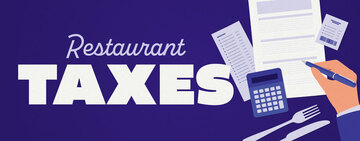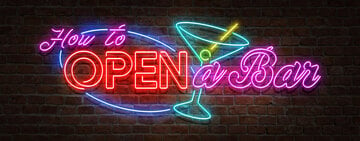
Whether you own a restaurant, bar, or catering company, overhead costs are one of the greatest expenses you'll pay to run your small business. By tracking and looking for cost-saving opportunities in your overhead, you can lower expenses and become more profitable. We'll teach you about the different types of overhead expenses and how your business can lower these to increase your profit margin and produce more revenue.
What Is Overhead Cost?
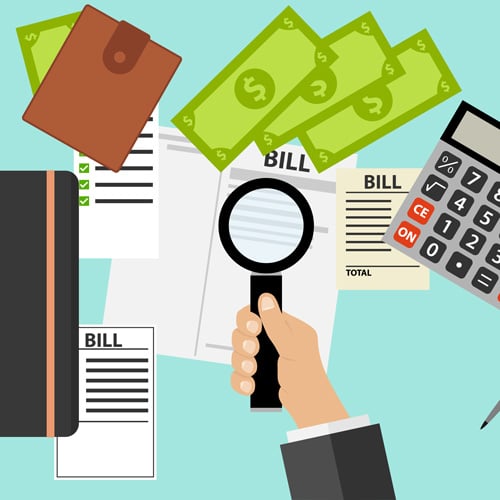
Overhead cost is any expense you incur while running your business that isn't the result of manufacturing a product or providing a service. You may hear overhead referred to as overhead costs or just overheads.
An easy way to remember what overhead means is to think of it as the expenses that keep the lights on and the roof "over your head". If you closed your business for a week and didn't sell any products or services, you would still pay overhead expenses like rent and utilities for your building.
So what types of expenses are not included in overhead? Your business overhead does not include the cost of raw materials that go into making products or the salaries of employees involved in selling your products or services. For businesses in the foodservice or hospitality industries, food cost and labor cost (except for administration or accounting) are not included in overhead.
Overhead Cost Examples
Each industry has its own types of overhead, but these are common overhead expenses most businesses pay:
- Rent or Mortgage - The rent or mortgage payment that you make every month is most likely your largest overhead cost.
- Utilities - The cost of utilities like electricity, water, gas, internet service, and sewer are the next biggest overhead expenses.
- Insurance - Any type of insurance that you pay to protect your business is considered part of overhead costs.
- Permits and Licenses - The cost of your business permits and licenses is considered an overhead expense.
- Property Taxes - Your property taxes are part of overhead cost.
- Certain Salaries - The salaries of employees like admins, accountants, and legal counsel are included in overhead.
Types of Overhead
Overhead can be divided into three different categories - fixed, variable, and semi-fixed. Learn more about these expenses below:
- Fixed Overhead - Fixed overhead expenses do not change over time. No matter how well your business is doing, fixed overhead cost stays the same. Rent and insurance are examples of fixed overhead expenses.
- Variable Overhead - Variable overhead cost increases as business increases. As a result of doing more business, you may need to perform more equipment maintenance. The cost for equipment repairs falls under variable overhead.
- Semi-Variable Overhead - Semi-variable expenses are costs with a base sum that doesn't change, combined with extra cost that increases as you do more business. Utilities are an example of semi-variable overhead.
How to Calculate Overhead
Typically, overhead is calculated monthly, but you can also calculate your overhead costs per day, week, or year. Once you add up overhead costs, you can make comparisons and take action to reduce those expenses and save money.
1. Create a List of Your Expenses
To calculate your overhead for the month, first draw up a comprehensive list of your expenses. This list should include rent, taxes, utilities, equipment, administrative supplies, maintenance, and advertising. Add up all costs to calculate your total overhead costs for the month.2. Calculate Overhead Percentage
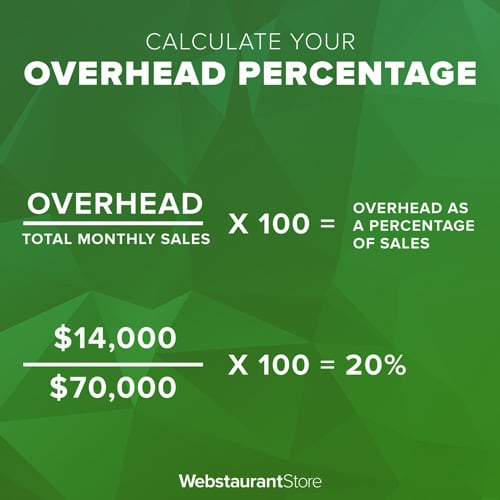
Overhead can be represented as a percentage that compares total overhead expenses to total sales. To calculate overhead percentage, use the following formula: Overhead / Total Monthly Sales x 100 = Overhead as a Percentage of Sales
Average overhead percentage varies by industry, with some businesses operating on the high end of the spectrum and some operating with a very lean overhead percentage. For restaurants, an overhead percentage of 35% is considered typical. Retail businesses, on the other hand, operate closer to a 20% to 25% overhead percentage.
Regardless of your profitability, it is important to track your overhead costs regularly. Many expenses, like rent and salaries, are constant and will not fluctuate much over time, but some costs, such as utilities, repairs, and advertising, can change greatly in a short amount of time. Tracking your restaurant overhead costs each month can give you a better picture of how your business is doing.
Back to TopHow to Reduce Overhead Costs
Many of the expenses that factor into a business's costs are fixed expenditures, but there are some actions you can take to reduce overhead costs. Taking steps like negotiating with suppliers and landlords or buying energy-efficient equipment can have a big impact on your bottom line.
To reduce your business overhead cost, take the following steps:
1. Renegotiate Your Lease
If you’re on a month-to-month lease, talk to your landlord about renegotiating your restaurant lease contract. Your business is a steady stream of income for your landlord, so they may be able to make a deal with you, especially if you commit to staying there for a while.
2. Sublease Your Restaurant Space
Subleasing your kitchen space is becoming a more popular and available option nowadays. After work hours or early in the morning, you can rent out your location as a commissary kitchen to other businesses, like food trucks and catering companies, that need a space for food prep.
3. Share with a Pop-Up
Try renting your space part-time to pop-up restaurants. Pop-up restaurants are establishments that operate temporarily in parks, galleries, warehouses, and even private homes. These restaurants use social media to promote themselves, and many chefs use pop-up restaurants to hone their skills, find potential investors, and gauge interest in opening a full-time operation. Because pop-up restaurants operate in non-typical locations, many times they need to borrow kitchen space from another restaurant or operation to prepare their food, which you can offer during your off hours.
4. Save on Equipment and Supplies
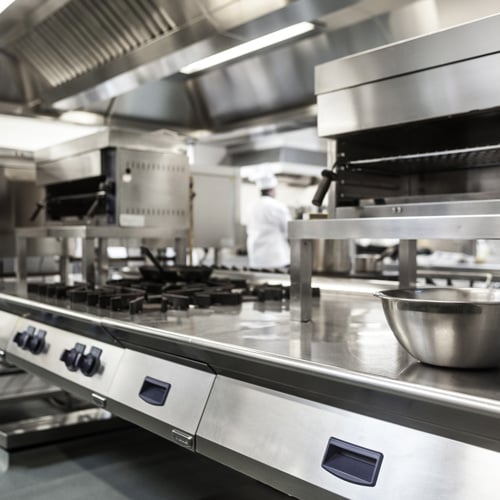
Equipment is a major investment for restaurant owners and makes up a large part of your overhead cost. Look for an online equipment supplier that provides benefits like membership discounts or free shipping on commercial equipment. The Webstaurant Rewards® Visa Business Card offers rewards on each WebstaurantStore purchase to help you save even more.
Check out more tips that will help you save on the cost of your restaurant equipment:
- Purchase Newer Models - Replacing old appliances with newer models can save on repair costs as well as your utility bill because many new appliances have energy-saving features.
- Choose Energy-Efficient Models - While energy-efficient appliances may be more expensive than standard equipment, the money you will save on utilities over time will make up for the discrepancy.
- Pick from the Scratch and Dent Section - The Scratch and Dent outlet features new equipment sold at discounted prices because of minor scratches or dents. The damage doesn't affect performance and customers won’t see any superficial flaws on your back-of-house equipment.
- Consider Combination Ovens - Combi ovens have three unique cooking modes - convection, steam, and a combination of the two, which allow you to cook a variety of dishes all in one appliance. Because combi ovens have so many cooking options, you can replace several costly appliances with one purchase.
5. Lower Your Utility Bills
Using energy-saving appliances is an excellent way to save on utilities, but there are some other steps you can take to cut your bill even more.
- Turn off lights in areas that aren’t being used. You can further reduce your electric bill by using energy-efficient lighting, like LED light bulbs.
- Buy equipment like pre-rinse spray valves and faucet aerators that reduce the amount of water you use at your dishwashing station.
- Only give your customers water if they request it. One or two wasted glasses of water may not seem like a lot, but compound that over the span of a month and it can add up to a substantial amount.
- Don’t overstock your fridges and walk-in coolers. These appliances work by circulating cool air, and if the fridge is too full, the air can't circulate. This forces the machine to work harder to maintain the cool temperature, costing you more money.
- Turn off your dishwasher at night. Many high-temp dishwashers have a water tank with built-in heating elements that keep the water hot at all times.
6. Use Social Media Marketing
Advertising cost is part of your overhead expenses, so using free marketing techniques helps to free up more capital. Social media is an excellent mobile media marketing tool for reaching a wider audience. With sites like Facebook, Twitter, and Instagram, you can post pictures and videos of your delicious food to entice people into your restaurant.
Social media allows you to inform customers of new menu items, daily specials, and upcoming events at your restaurant. When you interact with your customers and reply to their questions, you are reaching out to all of their followers and connections, potentially bringing in new business.
Back to TopOverhead costs can eat away a substantial amount of your profits each month, but managing your expenses is possible, and it can help you boost profits. The most important thing to keep in mind to drive down your overhead costs is to consistently monitor and track your spending while keeping an eye out for cost-saving opportunities.




